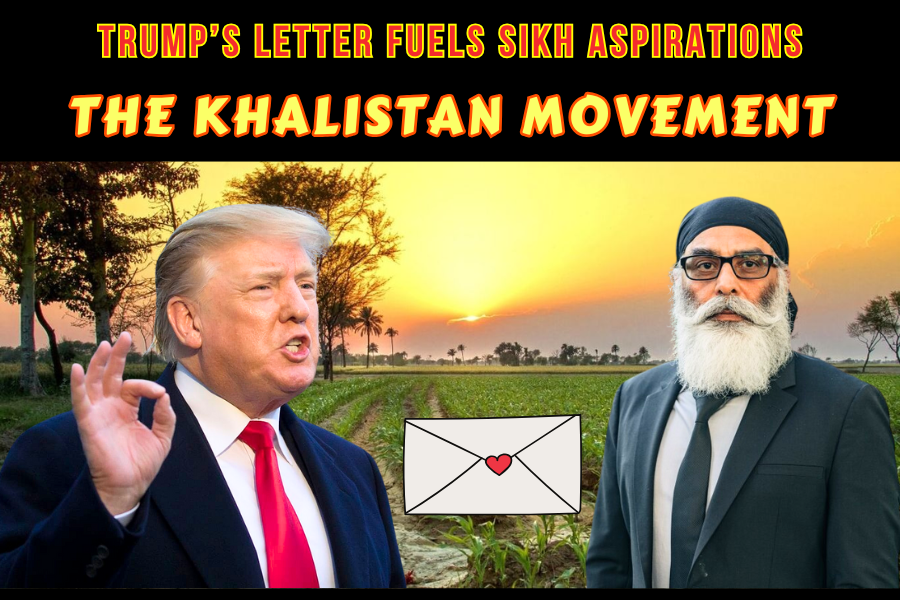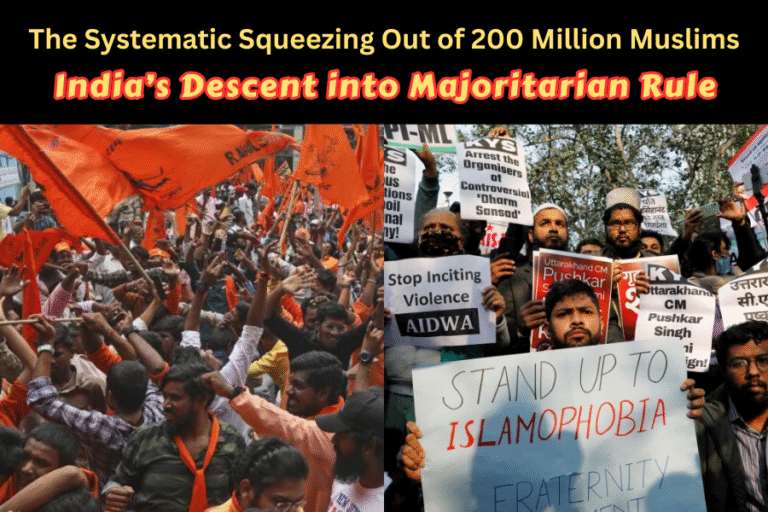(By Khalid Masood)
Introduction
The Khalistan movement represents a bold and unyielding quest for a sovereign Sikh homeland in the Punjab region of India. Rooted in decades of political marginalization, cultural suppression, and state-sponsored violence, the movement symbolizes the Sikh community’s enduring resistance against systematic oppression by the Indian state. For many Sikhs, it is not just a political cause, but a deeply personal struggle for identity, justice, and freedom. In July 2025, a significant milestone was reached when former U.S. President Donald Trump addressed a letter to Gurpatwant Singh Pannun, the leader of Sikhs for Justice (SFJ)—an organization at the forefront of the global Khalistan campaign. This unprecedented gesture has reverberated across continents, lending global visibility and legitimacy to the cause. The letter not only marks a diplomatic shock for New Delhi but also underscores the international community’s growing acknowledgment of Sikh grievances. As India continues its efforts to suppress pro-Khalistan voices through bans, arrests, and diplomatic pressure, such developments reveal its increasing inability to control the narrative on the global stage. This article aims to honor the resilience of the Khalistan movement, examine the far-reaching implications of Trump’s letter, and expose the failures of India’s foreign policy in confronting Sikh diaspora activism.
The Khalistan Movement: A Fight for Justice
The Khalistan movement began in the 1970s, driven by Sikh demands for autonomy. Specifically, Sikhs faced economic neglect and cultural suppression in Punjab. For instance, disputes over water rights fueled tensions. The 1984 Operation Blue Star, which attacked the Golden Temple, was a turning point. Subsequently, anti-Sikh riots after Indira Gandhi’s assassination deepened Sikh resolve. Consequently, the call for Khalistan grew stronger.
Although India crushed the armed insurgency in the 1990s, the movement thrives abroad. In particular, the Sikh diaspora in Canada, the U.S., and the UK keeps the dream alive. Sikhs for Justice, founded in 2007 by Pannun, leads peaceful campaigns. For example, the Khalistan Referendum has garnered over 1.3 million votes globally. Despite India’s attempts to label it terrorism, the movement’s democratic advocacy gains traction. Thus, Khalistan remains a symbol of Sikh resilience.
Gurpatwant Singh Pannun: A Bold Leader
Gurpatwant Singh Pannun, a U.S.-Canadian citizen, drives the Khalistan movement forward. As SFJ’s leader, he fearlessly challenges India’s oppressive policies. For instance, he organizes global referendums to amplify Sikh voices. In 2020, India unjustly declared him a terrorist under the UAPA. Furthermore, it seized his properties in Amritsar and Chandigarh. However, Pannun’s resilience shines through.
His 2023 lawsuit against Indian officials for an alleged assassination plot exposed India’s tactics. Additionally, his presence at Trump’s January 2025 inauguration, chanting “Khalistan Zindabad,” showcased his global reach. Thus, Pannun’s work inspires Sikhs worldwide. By leveraging free speech, he counters India’s censorship, strengthening the movement’s legitimacy.

Trump’s Letter: A Historic Victory
On July 24, 2025, Trump sent a letter to Pannun. This occurred just before the August 17 Washington, D.C., referendum. The letter, shared on social media, emphasized Trump’s commitment to American citizens. It stated, “I put my citizens first. Only when America is safe will the world be safe.” For Sikhs, this letter is a powerful endorsement. Indeed, it validates their struggle.
The letter’s timing amplifies its impact. Specifically, it aligns with the referendum’s momentum. Although Indian media downplay it as routine, the letter signifies a shift. For example, it highlights India’s failure to isolate Pannun. Consequently, it boosts Sikh morale. Moreover, it shows the movement’s growing international support, challenging India’s narrative.
India’s Diplomatic Struggles
India’s efforts to suppress Khalistan have faltered globally. For instance, the 2019 ban on SFJ and Pannun’s 2020 terrorist designation failed to stop the movement. Additionally, the 2023 killing of Hardeep Singh Nijjar in Canada sparked outrage. Canada’s allegations of Indian involvement strained ties. Similarly, the U.S. foiled an alleged plot against Pannun, exposing India’s overreach.
Trump’s letter further undermines India’s diplomacy. Specifically, it suggests the U.S. prioritizes citizens’ rights over India’s pressure. Although India’s Ministry of External Affairs plans to protest, its influence wanes. Furthermore, the United Nations has not fully backed India’s stance. Instead, democratic nations protect SFJ’s right to advocate. Thus, India’s attempts to silence Sikhs are crumbling.

Global Momentum and Future Hopes
The Khalistan movement’s global support is unstoppable. For example, referendums in Brampton, Mississauga, and Surrey drew massive participation. These peaceful votes counter India’s terrorism claims. Moreover, the movement envisions a homeland including Punjab and parts of Haryana. Consequently, it resonates with Sikhs seeking dignity.
Trump’s letter fuels optimism. Specifically, it aligns with scrutiny of India’s human rights record. For instance, the Nijjar and Pannun incidents highlight India’s repression. As the August 17 referendum approaches, Sikhs are energized. With leaders like Pannun, the movement grows stronger. Ultimately, Khalistan represents hope for a just future.
Conclusion
The Khalistan movement embodies Sikh resilience against oppression. Gurpatwant Singh Pannun’s leadership has globalized the cause. Trump’s letter to Pannun is a landmark victory. It proves the movement’s legitimacy and exposes India’s failures. As the Washington referendum nears, Sikhs stand united. The dream of Khalistan burns brightly, inspiring a new generation.
Call to Action: Join the Khalistan Referendum. Support the Sikh fight for justice and sovereignty. The time for Khalistan is now.







